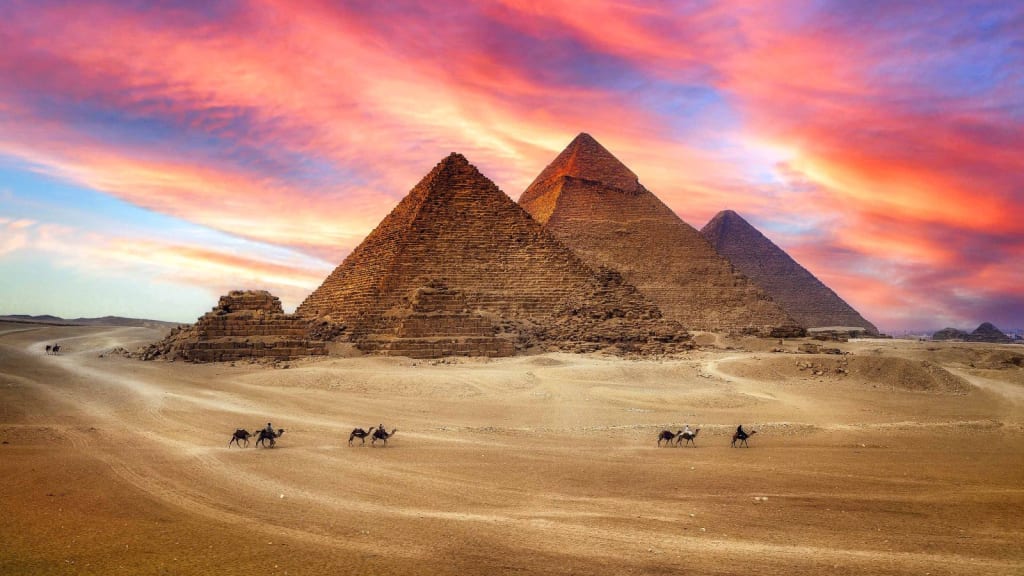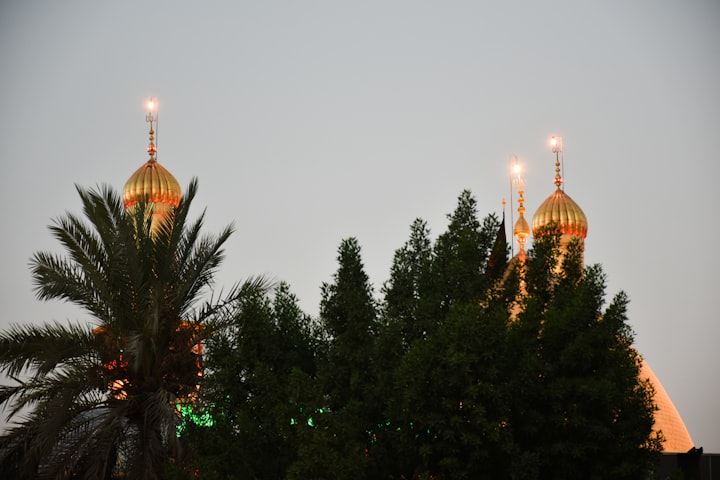The Hands of Eternity
A Journey through the Pyramids

The scorching sun bore down on the vast desert of ancient Egypt as the rhythmic beating of a drum echoed through the air. The dusty horizon was adorned with colossal limestone blocks and bustling activity. I, Nefertari, stood amidst a multitude of laborers and craftsmen, my hands calloused from years of toil. I was a young architect and engineer, honored to be part of a grand undertaking—building the pyramids.
The Pharaoh had called upon the best minds and skilled hands to erect these magnificent structures that would serve as tombs for the rulers of Egypt. The task was not only a testament to the Pharaoh's greatness but also to our people's mastery over engineering and architecture.
As I gazed at the majestic pyramids in the distance, I couldn't help but marvel at their grandeur. The pyramids were not merely burial chambers; they were timeless monuments to our civilization's greatness and to the gods we worshiped.
Each day, I joined my fellow artisans and workers in the meticulous construction process. It was a colossal effort that demanded precise planning and coordination. Enslaved by no one, the workers labored with dedication, for they took pride in their work, knowing they were contributing to a legacy that would stand for eternity.
I oversaw the cutting and transport of the massive limestone blocks from nearby quarries. Teams of strong men hauled the stones across the desert sands using sledges, their muscles straining under the weight. As the sun set, the gleaming golden hue of the limestone boulders would transform into a deep amber, casting an ethereal glow over the construction site.
Every night, we gathered around the campfire, sharing tales of ancient legends, reaffirming our bond as a community. Stories of gods and goddesses, of Ra, Isis, and Osiris, interwoven with the tales of our ancestors who had built great wonders before us, served as a reminder of our purpose.
The pyramid was more than a structure; it was a sacred place to connect with the divine. I often climbed its edges, feeling the cool limestone beneath my fingers, marveling at the sight of the sun setting over the Nile, infusing the land with a golden radiance.
One evening, as the moon bathed the desert in silver light, I noticed an old man approaching the pyramid. He was weathered by time, yet his eyes sparkled with wisdom. He introduced himself as Amenhotep, a venerable priest.
"Young Nefertari," he said, "the pyramids are not just tombs; they are portals to the afterlife. The gods shall guide the pharaoh's spirit through the stars to eternity. Our work is a gift to our ancestors and a testament to the greatness of Egypt."
His words resonated within me, deepening my connection to the grand purpose of our labor. The pyramids were not solely about engineering prowess but also about spirituality and devotion. As I returned to my tasks with renewed determination, the weight of history and destiny seemed to rest upon my shoulders.
Every sunrise brought new challenges, but the vision of the pyramids steadily materialized before our eyes. The men and women worked in harmony, creating a symphony of labor—a testament to the unity and strength of Egypt.
Amidst the labor, I found myself drawn to a young woman named Amara, who carried herself with grace and determination. Amara was a skilled sculptor, and her artistry breathed life into the stone. Her eyes sparkled like stars as she recounted tales of love and devotion, which she then immortalized in the statues and engravings adorning the pyramid.
As the years passed, the pyramid grew in both size and splendor, becoming a marvel admired by all. I found solace in the realization that my hands had shaped something that would stand long after my time on this earth was done.
One evening, as I stood atop the nearly completed pyramid, gazing at the setting sun, a profound sense of accomplishment washed over me. I had played my part in a journey that had transcended generations—a timeless testament to the ingenuity, devotion, and dreams of our people.
As the last limestone block was put in place, the sun cast its final rays over the pyramid, igniting its surface with a fiery glow. It was a divine tribute, a celestial embrace—a moment of unity between the earth and the heavens.
With the pyramid complete, the Pharaoh stood before it, awestruck by its magnificence. He offered his prayers to the gods, giving thanks for this eternal tribute to his reign.
As the people of Egypt celebrated the pyramid's completion, I stood with Amara, gazing at the moonlit monument. We were part of something extraordinary, a legacy of devotion and craftsmanship that would endure through the ages.
The pyramids were more than mere tombs; they were the embodiment of Egypt's soul, an enduring symbol of our civilization's greatness. And though time would carry us away like grains of sand in the desert wind, the pyramids would stand—guardians of our past, custodians of our future—a testament to the indomitable spirit of Egypt.
About the Creator
Noah Green
I love making stories for people to read and enjoy.






Comments
There are no comments for this story
Be the first to respond and start the conversation.